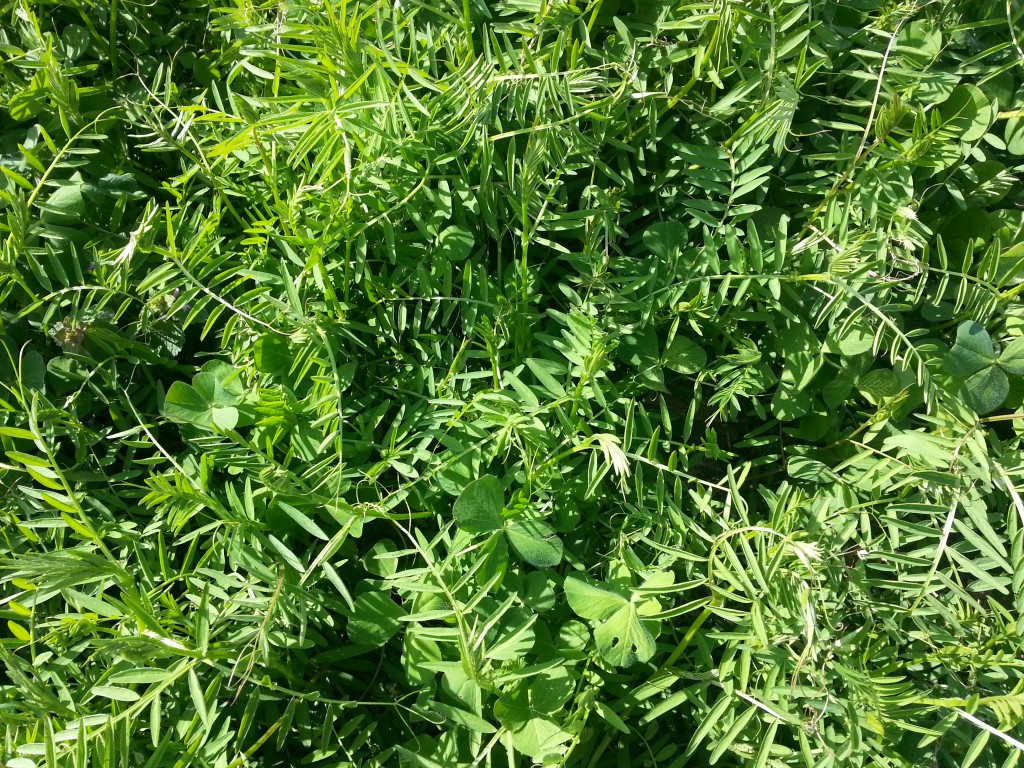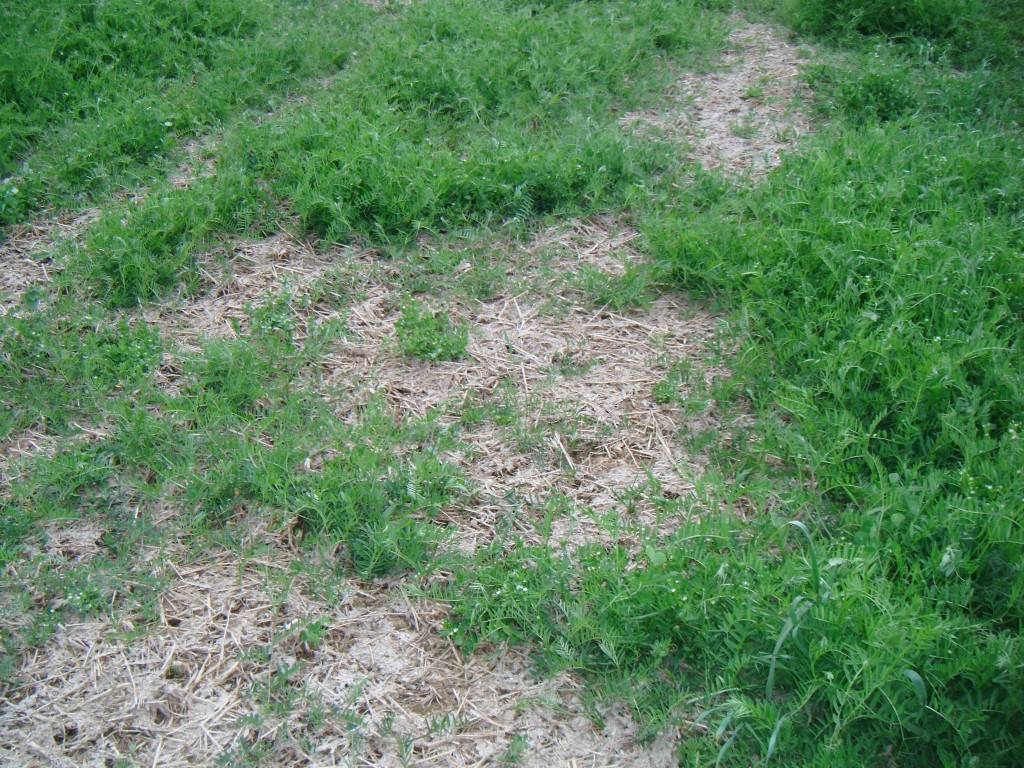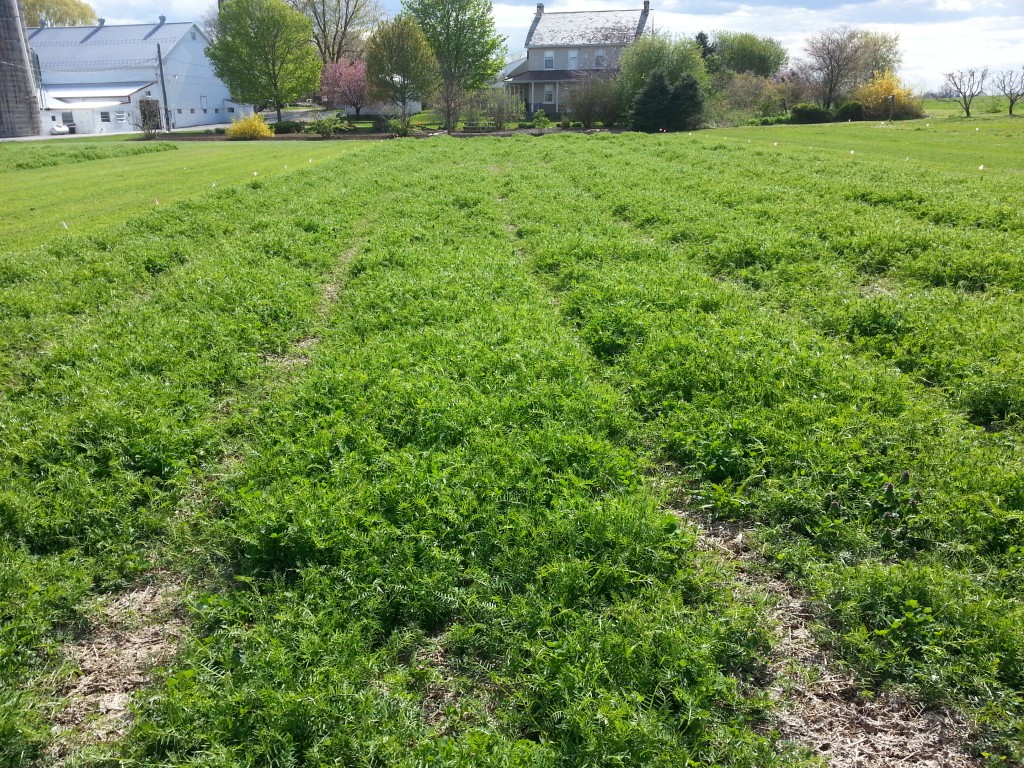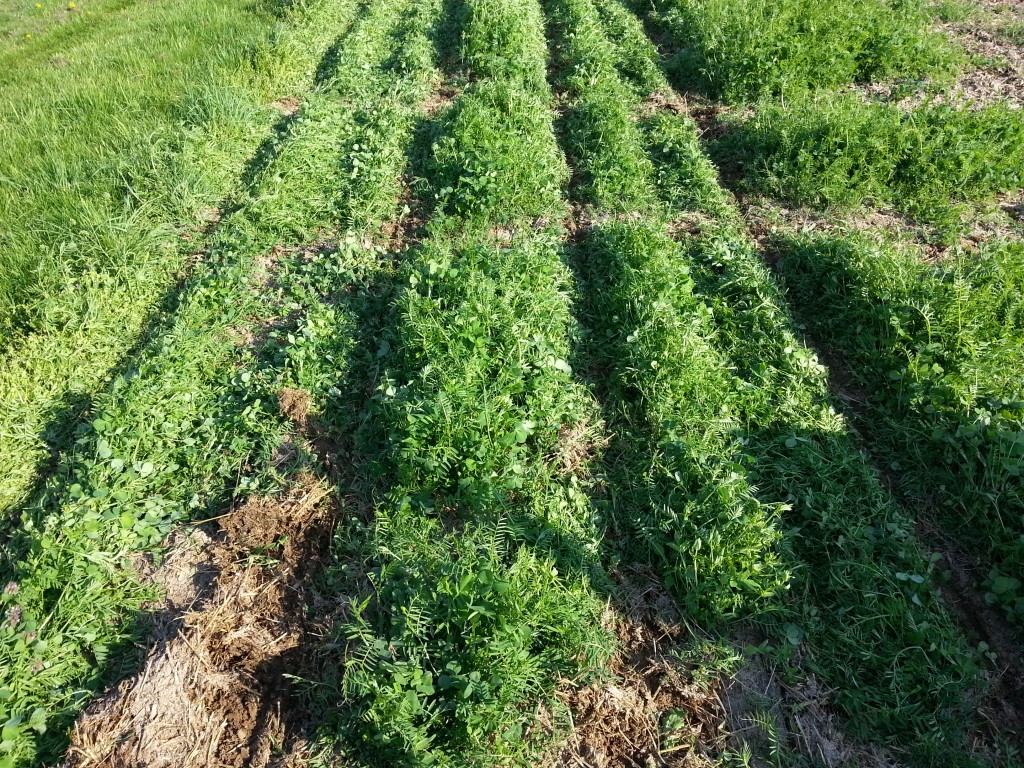Planting Green in a Cover Crop
Last fall we prepared a field for our 2015 corn plots by planting a cover crop mix: We used King’s Vetch and Oats seeded @ 88lbs./acre and Crimson Clover seeded @ 22 lbs./acre. We no-till drilled these into the field after a second cutting of summer annual teff was harvested. We put the vetch & oats in the big box and the crimson clover in the small box to plant these in combination. The oats came up as a quick growing cover and companion crop for the slower-establishing hairy vetch and crimson clover. The oats winterkilled, leaving their residue and the over wintering legumes.
This spring in April, we spread manure on the crop. This was an alternate approach to the all-at-one-time late spring burndown, manure plastering, and no-till planting into the cover crop – which we attempted last year and wrote about here. That approach was excellent for season-long nitrogen release and weed suppression, but made cutting through for no-till planting quite difficult.

The earlier manure application did suppress the cover crop in places – a combination of wheel traffic and physical smothering by the manure – but it continued to thrive for the most part and uptake available manure nutrients as the soil warmed up, preventing much leaching or other loss of the manure nutrients.


We “no-till planted green” on May 4, 2015. (That is into a green living cover crop). You can see that the corn planter easily cut through this succulent cover crop, which will be sprayed and killed before corn emergence, and placed the seed properly. No seed was evident on the surface after planting, as we experienced last year when we tried to cut through a plaster-like manure layer and a rubbery, already-dying crimson clover cover crop. The residue from this cover will still provide lots of nitrogen and weed suppression for months to come.

This will be our early planted plot (May 4, 2015) and we will also have a late planted plot (date to be determined) this year. Both plots have the same cover crop mix planted on the same date. Of course with our later planted corn plot we will get more hairy vetch-crimson clover mix cover crop growth and with that increased growth we’ll get more fixed nitrogen from the cover crop. Last year we no-till planted corn in the crimson clover cover crop on June 3, 2014, which indeed was a later planting date, and by that time the crimson clover was past full bloom. This year the early planting date of May 4 left us with both the hairy vetch and the crimson clover at pre-bloom stage and about 12 inches high. At this cover crop height we did not experience any tangling of the viney hairy vetch cover crop with our rolling row cleaners.

Since then this legume combination has already grown a few inches in the past few days with the increased heat units for growth. We are also planning on no-till planting green for the later planting date but we may have to make some planter row-cleaner modifications because of the much taller and vinier hairy vetch.
We seem to have caught it at a good stage for this early-planted corn. After a few weeks, the hairy vetch will become a thick, viney mat that may get more tangled in the corn planter than it did with this early planting. The mix will have fixed more nitrogen since both legumes will have increased biomass growth and be closer to bloom, but that may be a trade-off with the growing degree days we are losing for the corn. We will also have to deal with the greater physical difficulty in planting. No-till planting into rolled-down mats of hairy vetch one option that is usually easier, so if we have to we will roll it and possibly tie up the rolling row cleaners, as we have done before, so they don’t wrap the long viney hairy vetch around them. It will still be easier to cut through this living cover crop than if it were a dead, manure-plastered cover crop layer coating the soil surface.
Speak to an expert at King’s AgriSeeds now at 1-717-687-6224 or email us at [email protected].
